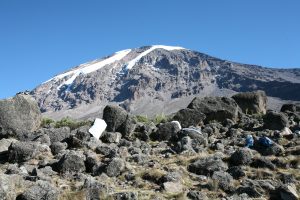The Best Time to Trek Mount Kilimanjaro: A Comprehensive Guide
Mount Kilimanjaro, the highest peak in Africa, stands majestically at 5,895 meters (19,341 feet) above sea level. This iconic mountain attracts adventurers from all over the world, each seeking to conquer its heights and experience the stunning beauty of its diverse landscapes. However, timing your trek is crucial for ensuring a safe and enjoyable experience. In this post, we’ll explore the best times to trek Mount Kilimanjaro, the seasonal variations you can expect, and important considerations to help you plan your adventure.

Understanding Kilimanjaro’s Climate
Kilimanjaro is located near the equator, which means it doesn’t have the traditional four seasons found in many other parts of the world. Instead, the weather is influenced by tropical climate patterns. The mountain experiences two main rainy seasons: the long rains from March to May and the short rains from October to November. Between these periods are dry seasons, making them ideal times for trekking.
The Dry Seasons
- January to March
- Pros: This is one of the best times to trek Kilimanjaro. The weather is generally dry, with clear skies and warmer temperatures, particularly on the lower slopes. The views are breathtaking, and the trails are less crowded compared to peak trekking seasons.
- Cons: Night temperatures can drop significantly, especially at higher altitudes, so trekkers should be prepared for chilly conditions.
- June to October
- Pros: This period is also popular for trekking due to the dry weather and stunning visibility. Wildlife is often more active during these months, and trekkers can enjoy clear views of the surrounding landscapes.
- Cons: While the weather is favorable, October can sometimes bring short rains as the season transitions. Additionally, June to September can see more crowds, especially during peak travel months.
The Rainy Seasons
- March to May (Long Rains)
- Pros: The landscape is lush and green, with vibrant flora and fauna. This period is ideal for those who enjoy solitude, as the trails are less frequented.
- Cons: The long rains can make trekking difficult due to slippery trails and increased risks of landslides. Visibility can be poor, and the higher altitudes may experience snowfall.
- October to November (Short Rains)
- Pros: Similar to the long rains, this period offers lush scenery and fewer trekkers. Wildlife is often spotted, making it a great time for photography.
- Cons: Rain can disrupt trekking plans, with muddy trails and potential delays. The weather can be unpredictable, so trekkers should be prepared for sudden changes.
Peak Trekking Months

January and February
These months are part of the short dry season and are typically considered the best time to trek. The weather is warm, and the skies are usually clear. Trekkers can expect less humidity and fewer crowds. January, in particular, offers fantastic views of the summit.
June to September
This is the peak trekking season. Many climbers take advantage of the favorable weather conditions, resulting in busier trails. If you choose to trek during this time, consider booking your trek well in advance to secure your spot with reputable guides.
October
While it can be rainy, October is still a viable option for those seeking fewer crowds. The scenery is stunning, and the trails are less trafficked, making it a great choice for adventurous trekkers.
Considerations for Trekking Kilimanjaro
Altitude and Acclimatization
Regardless of when you choose to trek, altitude sickness is a significant concern. Acclimatization is critical for safely ascending Kilimanjaro. Trekkers should plan for extra days on the mountain to allow their bodies to adjust to the changing elevation.
Trekking Routes
Kilimanjaro offers several routes, each with its unique characteristics and challenges. The popular routes include:
- Machame Route: Known for its scenic beauty and diverse ecosystems, it is a favored choice among trekkers. January to March and June to September are ideal for this route.
- Lemosho Route: This less crowded route provides stunning views and ample acclimatization time. It’s best trekked during the dry seasons.
- Rongai Route: Starting from the northern side, this route is less frequented and offers a different perspective of the mountain. Trekking is ideal from January to March and June to October.
- Marangu Route: Often referred to as the “Coca-Cola” route, it is the only path with hut accommodations. While it can be trekked year-round, the best months are June to October.
Packing and Preparation
No matter the time of year, proper preparation is essential. Here’s a checklist of what to pack:
- Clothing: Layered clothing is crucial. Include thermal base layers, insulating mid-layers, and a waterproof outer shell.
- Footwear: Invest in good-quality trekking boots that are broken in but not worn out.
- Gear: Bring trekking poles, a quality sleeping bag rated for low temperatures, and a daypack for daily essentials.
- Hydration and Nutrition: Water purification tablets, high-energy snacks, and electrolyte supplements are vital for maintaining energy levels.
Choosing a Guide
Selecting a reputable guide company is crucial for a successful trek. Look for companies that prioritize safety, have experienced guides, and offer good acclimatization schedules. Read reviews and check for certifications to ensure you’re in good hands.
Conclusion
Choosing the best time to trek Mount Kilimanjaro depends on your preferences and tolerance for crowds, weather conditions, and trekking challenges. The dry months of January to March and June to October are generally the most favorable. However, if you’re looking for a quieter experience with stunning scenery, the shoulder months of October and November might also be appealing.
Remember, trekking Kilimanjaro is not just about reaching the summit; it’s about enjoying the journey, the breathtaking landscapes, and the sense of achievement that comes with conquering Africa’s highest peak. Whichever time you choose, prepare adequately, respect the mountain, and soak in every moment of this unforgettable adventure. Happy trekking!
